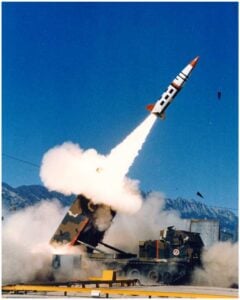Pentagon Can’t Afford To Field 3rd Offset Tech Under BCA: Frank Kendall
Posted on

Frank Kendall
WASHINGTON: Can the Pentagon afford its Third Offset Strategy? From anti-ship missiles to artificial intelligence, the military is experimenting with a host of high-tech systems to counter increasingly sophisticated Russian and Chinese forces. That effort is essential, said the Defense Department’s procurement chief, but there’s one problem:
If we want to go beyond experiments and actually buy any of these systems in numbers large enough to matter on the battlefield, it’ll cost a lot more money — money the military doesn’t actually have. That punts some hard decisions to the next president, whoever he or she may be.
“Ultimately, we need capability, and to get capability in the hands of the warfighters, we have to go to the next step,” undersecretary Frank Kendall told reporters Friday on the margins of a Third Offset conference at the Center for Strategic & International Studies. Kendall’s seen similar efforts — such the Advanced Concept Technology Demonstrations (ACTDs) — fizzle in the past, he said. His fear: “We’ll do the demo, we’ll be very happy with the results, (but) we won’t have the money to go on. That’s what I’m concerned about.”

Army Tactical Missile System (ATACMS) launch
Consider the plan to upgrade the Army’s ATACMS artillery missile to strike moving targets on both land and sea, which Defense Secretary Ashton Carter made public at the CSIS conference. “What he was talking about was an experimental program,” Kendall emphasized, not yet a large-scale fielding. “It’s a demonstration, so you do one tests or two tests, and you say ‘okay, it works, now I’ve got to go finish the engineering so I can put it in the field.. and then do the production.'” But upgrading missiles en masse for use in actual war is much more expensive overall (albeit much less expensive per missile) than modifying a handful for tests.
You don’t need to fund all the experiments now getting underway, Kendall clarified: The whole point of experimenting is figuring out what works well enough to fund and what doesn’t. “Some of these will fail anyway,” he said, “but some of them need to succeed and become real programs, and those decisions are decisions that are going to have to be made over the next few years.”
“The next administration’s got to figure that out,” Kendall said. “We’re going to be…still in a very polarized political situation and arguing over the size of the defense budget, and I think we need to get to an argument about how much we really need for national security.”
“It’s distorted right now by the constraints of sequestration,” he told reporters, referring to the spending caps imposed by the much-despised Budget Control Act.
Kendall was characteristically gloomy — overseeing Pentagon procurement for most of the last six years would make anybody dour — but his comments line up with what the famously bullish father of the Offset Strategy himself told us in February:
“We don’t have enough money to do everything we want to do,” Deputy Defense Secretary Bob Work told me in an exclusive interview. “So what we’re doing this year, Sydney, is we are trying to prepare as many demonstrations on advanced capabilities as we possibly can for the next administration to determine…the way they want to go.”
The man sponsoring the Army’s ATACMS experiment, Strategic Capabilities Office director Will Roper, said much the same when asked whether any of his team’s bright ideas would ever get fielded.

Defense Secretary Ash Carter talks to Strategic Capabilities Office director William Roper at Submarine Base New London.
“My job is to generate new options,” both for the current administration and the next, Roper told reporters at the CSIS conference. “My job is to make sure there are as many choices as possible on the table, so that no matter what the budget restraints are, there’s going to be an overabundance…of things to choose from. What we certainly don’t want to do is have the next administration come in (and) have too few options to choose from as opposed to too many.”
“So in the case of the ATACMS upgrade that was announced today,” Roper continued, “my goal is to develop and demonstrate an ATACMS that’s capable of hitting moving targets at land and sea….What does that give the Army in a future budget cycle? It gives them the option to budget for fielding that system, which is an option they don’t have today.”
But if the Army can’t afford to field the upgraded ATACMS, the whole exercise is rather moot. That’s what Kendall is worried about.
“All the things we’re doing are creating options for future administrations, for future congresses,” Kendall told the CSIS conference. “We’re not fielding capabilities. We’re doing early stage risk reduction, experimentation, building prototypes, we’re giving the operators to try things out, and we’re moving technology forward. It’s great for the industrial base. It keeps engineers employed” — preventing a brain drain out of the defense industry — “but it is essentially buying options for future programs we would have to fund.”
“It’s going to be difficult to get enough money to (produce) even a minor subset of those things,” Kendall said. “That takes money that we don’t have, and that’s what keeps me awake at night.”
Subscribe to our newsletter
Promotions, new products and sales. Directly to your inbox.
